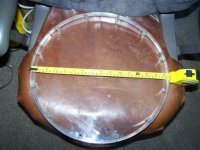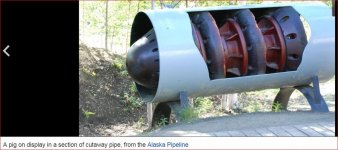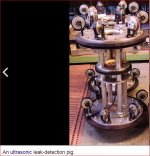JHOLLAND1
Titanium
- Joined
- Oct 8, 2005
- Location
- western washington state
40 years ago local experts predicted great short falls in electric power
so the big companies commited to simultaneous build of 5 nuclear power plants
one was completed and produces power
and when liquidation of assets of our two local incomplete units began--i was there
i wanted the 400 ton rotary crane intended for reactor building --opening bid was $250K-- no one took it home that day---but i did get the complete control console complex for the german built crane
next auction --scored four pig traps--800 lb german built cannisters dedicated to trapping 12 inch pipeline pigs used to clean and pressure check high pressure lines routed to cooling towers--
each trap had a 44 mm thick viewing window--acrylic-- and fiberglass porus trap--i still use the traps to hold garden hose
first recorded use of pigging was 1870 in Penn oilfield pipelines
pigs have gotten smart and on occasion still squeal as they squiggle thru
iron tubes
so the big companies commited to simultaneous build of 5 nuclear power plants
one was completed and produces power
and when liquidation of assets of our two local incomplete units began--i was there
i wanted the 400 ton rotary crane intended for reactor building --opening bid was $250K-- no one took it home that day---but i did get the complete control console complex for the german built crane
next auction --scored four pig traps--800 lb german built cannisters dedicated to trapping 12 inch pipeline pigs used to clean and pressure check high pressure lines routed to cooling towers--
each trap had a 44 mm thick viewing window--acrylic-- and fiberglass porus trap--i still use the traps to hold garden hose
first recorded use of pigging was 1870 in Penn oilfield pipelines
pigs have gotten smart and on occasion still squeal as they squiggle thru
iron tubes










